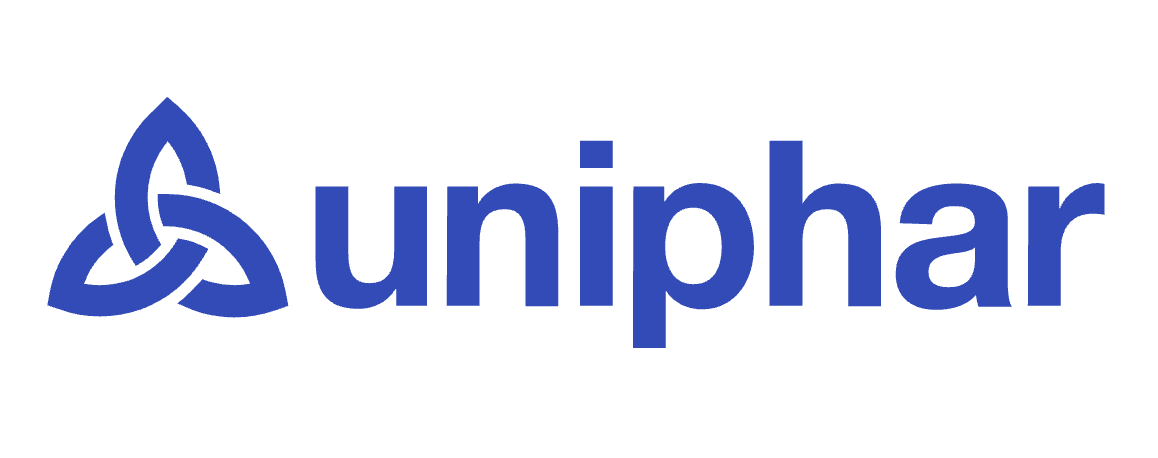By Denise Myshko The Art of Site Selection For pharmaceutical sponsors and their CRO partners, selecting the right investigator site is a linchpin to trial success. Quality sites have to have a well-trained staff, a patient-recruitment plan, experience in meeting or beating enrollment targets, low query rates, and quick turnaround. In my experience, site management organizations that Have no actual ownership of the site have been a big bust. They often don’t enroll any better than other sites, and they can be slower to get up and running because of the middlemen involved. SteveN Mayo In the quest to bring drugs to market promptly, the pharmaceutical industry depends heavily on the investigator sites that conduct clinicals trials and their ability to get the job done well. According to industry experts, a quality site is one that has a well-trained staff; a demonstrated track record and an ability to attract patients within its own practice; the ability and the willingness to recruit patients from outside its own practice to help meet the sponsor’s timeline; high-quality interaction with patients to maintain patient interest throughout a trial; and high-quality data and feedback. The Staff Integral to a high-quality site is the preparedness of the site coordinators. The role of site coordinators varies. Most coordinate the logistics of a study. Some are involved in patient recruitment and monitoring. Some are primarily data or regulatory document coordinators. Some are responsible for inventory of trial supplies. Some track requests for payment. And some coordinate meetings. “Coordinators are the heart and soul of the study,” says Toby Mulligan, chief operating officer at Spectrum Pharmaceutical Research Corp. “The coordinators are responsible for recruitment; they are certainly responsible for recording the data and handling the mechanics of the entire study.” Industry experts say it’s important for sponsors and CROs to consider the experience and training of the coordinator as much as they would the experience and training of the investigator. “The study coordinator has to understand the case report form, the study protocol, the procedures, and keep track of scheduling the patients,” says Steven W. Mayo, PD, president, founder, and CEO of Emissary Inc. “Sponsors should meet the study coordinator, find out what that person’s experience is, and what his or her workload is.” The coordinator is the point person between the sponsor and the investigator, says Jennifer Stanford, R.N., MSN, CCRC, executive director at the Cardiopulmonary Research Science and Technology Institute (CRSTI). “About 15 years ago, there were a lot of physicians doing clinical research who didn’t have a study coordinator working with them,” she says. “Many times, a physician will find a nurse or someone he or she has known for a long time and ask that person to help with a study.” Mr. Mulligan says when evaluating a site’s qualifications, his company conducts interviews with coordinators. “We talk to them about where they think patients can be found and if there are enough patients at that site,” he says. “Our CRAs are trained to develop a relationship with the site coordinator to effectively encourage enrollment, supervise the production of clean data, and ensure that all the regulatory requirements are met. The relationship of the CRA and the study coordinator cannot be understated.” Daniel D. Weddle, president and CEO of SiteAvail Inc., points out that because there is a high turnover rate among study coordinators, it’s important for a site to have a coordinator succession plan in place, including a plan on how to manage the transfer of knowledge. “Site coordinators and CRAs in this industry turn over every two or three years,” Mr. Weddle says. “Clinical-development plans are five to seven to 10 years long. Very often sponsors have to talk to people who were not involved in the beginning of the study.” There are efficiencies that can be had by managing the back end of the study, after the trial is completed, he says. “Most of the CRAs in this industry focus on the front-end criteria of getting the site up and running,” Mr. Weddle says. “They don’t focus as much on the back end. But CRAs should have a role in helping the site assess how the data will be handled over time. Sites have to have a tracking system. This is important because the FDA may come in and inspect that site three years or five years after the study is done. A succession plan, technology, and systems are needed to maintain the quality of the project and the site after the study has been completed.” “We find at the very busy centers there may be more turnover,” says Maria Smith, director of clinical operations, U.S., at Roche. “In terms of the grant that we issue to support the site, we emphasize that part of the funding is for training and retaining staff. But, to some extent this is out of our control because the staff is hired by the investigator.” Even with systems in place, training is imperative because many coordinators often fall into the position with little understanding of the processes needed on the front end of a trial. For Jean Viallet, M.D., VP of clinical development at Gemin X Biotechnologies Inc., a site ideally should have clinical-research coordinators who have been on site for five or more years and who have been involved in multiple programs with different sponsors. “It is not a good sign if the research coordinator has been on the job for only a few months and shares with us that there has been a history of high turnover in that position,” Dr. Viallet says. “This is a cause of concern, and one that we have to address with the investigator.” To help maintain consistency during staff turnover, Laurie Considine, manager of site relations at MediciGroup Inc., says current experienced coordinators need to impart their knowledge of the study for a smooth transition. “Also, we involve the coordinator and get their input on the various aspects of the study and recruitment strategies,” she says. “We want their input on the benefits and barriers of the study; we ask for their suggestions on the things that can be done to make the process work better to achieve recruitment success.” Mr. Mulligan agrees that sites that employ well-trained coordinators will be more successful at recruiting patients because they understand the protocols. “They understand the inclusion/exclusion criteria,” he says. “They can successfully identify study participants and manage and retain these patients for the duration of the study. We are constantly training sites on the mechanics of the study and how to handle the drug and properly record the data. The result of this investment in training is cleaner data, quicker database lock, and shorter timelines.” “The sites that are the most effective and probably the most profitable are the ones that work effectively with CROs, recruitment vendors, and the sponsors to be flexible and use the resources to get a clinical trial initiated in the shortest amount of time,” says Mark Eisenach, CEO of Acurian Inc. Patient Recruitment Patient recruitment and retention are still the biggest impediments in the clinical-trial arena. Parexel estimates that 80% of trials miss their enrollment deadlines. CenterWatch claims that 45% of all delays in clinical trials can be attributed to poor patient-recruitment performance, with most delays exceeding six months. When selecting a site, industry experts stress that sponsors need to evaluate a site’s success and ability to recruit patients. Some sites may overestimate the number of patients they can bring into a trial to get the business. “This is a highly competitive business, and pharma companies sometimes will tap sites that report that they can recruit patients, without doing due diligence, such as evaluating information databases about past performance,” Mr. Eisenach says. “Sponsors need to go beyond the physicians’ optimistic projections.” According to Mr. Mayo, some physicians don’t take the time to read or understand the protocol before applying for a trial. “They may see that a trial is centered on migraine and they have lots of migraine patients,” he says. “But the devil is in the details. The protocol may call for patients who are female between 18 and 30 years old. So, what at first appeared to be a big patient population narrows down very quickly. Enrollment problems account for about two-thirds to three-quarters of all studies that fail, and many times this is because physicians can’t enroll the right patients. Physicians say they have lots and lots of patients for the study and can enroll the study in half the time. Such good intentions almost never turn out to be true in the end.” April Freeman, senior product manager for quality and process management and clinical operations specialist at PRA International Inc., says her company works with physicians to find a realistic assessment of the number of patients who can be enrolled. Clinical-operation specialists at PRA International focus on investigator selection and recruitment and support investigator sites. “We work with physicians and review tried-and-true methods that the investigators may not have thought about to enhance their patient-recruitment methods,” Ms. Freeman says. “During the selection process, the clinical-operation specialists collect the essential documents that are required to be on file from the site. They also work with the sites throughout the trial to update these documents and support other clinical-tracking issues.” This model, she says, allows for better communication with the site. “The clinical operations specialists work very closely with the in-house CRAs and the lead CRAs so there is a good balance of people who can answer questions about essential documents and people who can answer questions about the protocol and the inclusion/exclusion criteria,” Ms. Freeman notes. At Kendle International Inc., a new initiative called Trial Launched has centralized the process for patient recruitment. “Now that we’ve centralized the process, we can take a look to see if Dr. Smith was able to get us the 20 patients he said he could,” says Nancy Werdmann, RN, BSN, CCRA, clinical research project coordinator at Kendle International. “We involve our patient-recruitment group up front when doing study feasibility. The group will look at a protocol and tell us whether it will be difficult to recruit patients or physicians. If we can’t change the protocol, then we can develop patient-recruitment tools to assist the physicians. We’re trying to ensure this takes place at the start so it doesn’t become a rescue study.” Patient retention is as important as recruitment and will depend to a large degree on how the staff at a clinical site interacts with patients. “Being patient focused is critical,” Ms. Considine says. “The site’s staff needs to be compassionate and flexible about patients’ needs, especially in terms of addressing their questions and scheduling visits that work with their lifestyle. This is key to recruitment and retention.” Mr. Eisenach says critical to a site’s interaction with patients is the ability of the staff to explain the clinical-research process, as well as the informed-consent process. “Some sites mail an informed-consent form to a patient’s house, instruct the patient to read the form, and return to the site with it signed,” he says. “This approach does not invite the patient to participate in the process. The sites that perform the best are the ones that take a more active approach with the patients in these interactions.” Managing the Business One thing sponsors need to consider is how well sites manage their own business, Mr. Eisenach advises. “How well a site is run as a business is an indicator of how it’s going to interact with the sponsor,” he says. “The site should be evaluated for how well it runs the research practice as a business. Does it have electronic schedules? Does it have good data about current and future projects? These criteria will indicate how well the site plans and how well it will handle a project.” Mr. Weddle says sites can differentiate themselves in terms of the technology they have in place, starting with coming up to speed with electronic data capture and training in general. “Next is a site’s willingness to adopt new systems, and then have in place the platforms, such as high-speed Internet connections, for adoption,” he says. “It is in the sponsor’s interest to subsidize the adoption of better technology. The cost for pharma companies to subsidize a high-speed Internet cable connection would be about $50 a month. That is not a lot of money out of pocket to get a site ready to develop a platform for electronic data capture.” “So many things are improved if the interactions between the sponsor, the site, and other vendors are Internet based,” Mr. Eisenach says. Ms. Smith says most of the sites Roche uses have access to the Internet, and some sites are using electronic data capture. “As we move toward using electronic data capture for more of our trials, one of the things that we’re going to be very interested in is whether this is a roadblock for the investigator to participate in a trial,” Ms. Smith says. “Because investigators have a choice, we actively solicit their feedback. Roche wants to be the sponsor of choice for investigational sites. The environment is so competitive, and investigators have more of a choice now in terms of who they want to work with.” F PharmaVoice welcomes comments about this article. E-mail us at [email protected]. A high-quality site is one that has timely document turnaround, timely patient enrollment, and a well-trained staff that is familiar with the disease process and the patient population. Nancy werdmann Pharma companies are looking for sites with active and prospective patient-recruitment plans, experience in meeting or beating patient-enrollment targets, low query rates, quick turnaround, and responsiveness to any issue. Daniel Weddle The coordinator is the point person between the sponsor and the investigator. Jennifer Stanford The Science Behind Identifying and Selecting High Performing Investigators Investigative sites are a critical part of the clinical-trial process. but how does a sponsor determine if a site is right for a particular trial? Is it by the number of studies they have conducted? Is it the number of patients enrolled in each study? The fact is, self-reported enrollment metrics can be misleading. It is difficult to judge whether sites met enrollment because of an easy protocol or because the sponsor had allocated a substantive recruitment budget to the program. In today’s competitive clinical-trials environment, it is wise to focus on experienced investigators who have the right patient populations for a given study. To help determine whether a site has the right patient populations, companies are linking clinical-trial experience and practice demographics with deidentified insurance-claims data. Claims data come in the form of scripts (Rx), diagnoses (ICD-9), and procedures (CPT-4). A combination of scripts and claims can help determine whether the site has the patients and what scripts are being written for the disease. This is not an exact science, but can help with short-listing investigators before conducting site feasibility. It also can be used as a “gut check” if a third-party service provider selected the sites. Questions to ask to determine site feasibility: Do the sites have the right patient populations? Do they have experience in the indication? Can they conduct the study from an operational standpoin ? Do they have the capacity? Experienced staff? Concurrent studies? Do they have the capabilities to execute the study? What is the plan when they can’t find enough patients to meet study requirements? Do they have a referral network? In summary, use decision-support data to short-list potential sites that have the right patient populations, and then screen the sites in more detail considering their current ability to recruit patients in addition to a well-designed redundancy procedure. Source: Michael Petrarca, VP of clinical operations, ePharmaLearning, Conshohocken, Pa. For more information, visit epharmalearning.com. Use decision-support data to short-list potential sites A high-quality site builds patient relationships right from the beginning. That is essential for recruitment and retention. Laurie considine We see the sponsors taking an active role in the recruitment of the sites even though they’re working through a CRO or a third party. There is a long-term relationship to be had with those physicians, and pharma companies need to be involved. Mark eisenach well-trained sites are going to recruit more patients because the Staff understands the protocols; they understand the inclusion/exclusion criteria; they can successfully identify study participants, and manage and retain these patients for the duration of the study. Toby Mulligan Just because an investigator is appropriate for one trial doesn’t necessarily make that person or the site appropriate for another trial. April Freeman Site Perspective Pharmaceutical Research Plus Inc. (PRP), a patient-recruitment company for clinical trials, released its key findings from a clinical-trial site survey. The survey included a 29% response rate with 922 surveys sent and 269 surveys returned. According to Stedman Stevens, president and chief operating officer of PRP, the objective of the survey was two-fold: ascertain clinical-trial logistics and data-collection capabilities; and identify investigator site’s key needs, concerns, and operational issues leading to under enrollment. u The top three areas of concern are: sponsor/CRO administrative issues related to protocols, source documents, and patient tracking; improving patient recruitment — increasing the number of potential patients (percentage completing the study with usable data) — and prescreening of referrals to assure protocol compliance; and inconsistent communication with the sponsor company/CRO and lack of availability of CRAs/monitors when needed. u 71% of sites responding have online entry capability, but less than 5% actually use this tool. u More than 70% of sites indicate they are currently involved in six or more clinical studies. u About one-third of sites (32%) need to recruit two of every three study enrollees from sources outside their own practice. Source: Pharmaceutical Research Plus Inc., Severna Park, Md. For more information, visit prpi.com. survey results say … Accounting Problems for Investigative Sites The financial challenges of running a site add a new dimension of difficulties for these entities. There are several accounting issues associated with clinical-trial agreements between pharmaceutical companies or CROs and investigative sites that need to be considered. u Cash flow is the No. 1 concern of investigative sites u Investigator participation is expected to fall short of demand by 2005 u Tens of thousands of billable events are handled at a typical academic medical center (AMC) u An invoicing mechanism is normally not used u Every clinical-trial agreement has different payment terms u Payments often do not indicate to which project they apply According to data obtained from 800 investigative sites, site management organizations, and AMCs, the typical days of sales outstanding (number of days from patient visit to payment) is 100 to 140 days. This means that a site with $5 million in annual revenue may be owed $1.4 million to $1.9 million in outstanding accounts receivable. It can be difficult to run an efficient business with so much money outstanding. The opportunity cost associated with waiting for payment in this growing industry can be severe. Smart sites find it important to supplement their cash flow with external funds that enhance their growth. Also, the accounts receivable for clinical-trial activity often goes unrecognized because of the fact that many facilities account for research on a cash, not accrual, basis. Since payments to sites and AMCs are normally received as a result of contractual milestones — not upon the payee sending an invoice — difficulties can occur with tracking revenue and accounts receivable, collection, study reconciliation, and financial reporting. In other words, if a site doesn’t know what it has earned (because it is not sending an invoice), how does it know what it is owed, how long it’s taking to get paid, or if it’s receiving the correct amount? A greater focus on general accounting will lead to improvements. By having additional individuals solely dedicated to tracking, collection, reconciliation, and reporting — or by outsourcing these functions — major financial benefits can be brought back to the facility. For example, if four people are dedicated to the above tasks at that same $5 million facility, the additional cost may be $100,000, but it could uncover a plethora of accounting errors and reduce their acounts receivable from $1.9 million to $1.3 million (bringing $600,000 back to the facility). Understanding and correcting these issues are not necessarily intuitive to those without a financial background, that’s why there is a need to have an accountant. Sites need to investigate their finances, consider putting additional people in place, and revise their processes to more closely coincide with standard accounting policies or outsource all financial aspects of the business. Source: James M. Wynn III, Clinical Financial Services LLC, Phoenixville, Pa. For more information, visit clinicalfinancialservices.com. there are several accounting issues caused by the variety of payment terms. Ideally a site should have clinical research coordinators who have been on site for five or more years and have been involved in multiple programs with different sponsors. Dr. Jean Viallet Because investigators have a choice, we actively solicit feedback from them. We want to be the sponsor of choice for investigational sites. Maria smith Maria smith Experts on this topic Laurie Considine. Manager of site relations, MediciGroup Inc., King of Prussia, Pa.; MediciGroup was founded in 1993 with the vision of building long-term client relationships by providing strategic direct-to-patient clinical trial recruitment and retention programs, coupled with world-class implementation. For more information, visit patientrecruitment.com. Mark Eisenach. CEO, Acurian Inc., Horsham, Pa.; Acurian is a provider of clinical-trial patient and investigator recruitment solutions for the pharmaceutical and biotech industries. For more information, visit acurian.com. April Freeman. Senior product manager, quality and process management, clinical operations specialist, PRA International Inc., McLean, Va.; PRA is a global CRO with more than 2,300 employees worldwide. For more information, visit prainternational.com. Steven W. Mayo, PD. President, founder, and CEO, Emissary Inc., Austin, Texas; Emissary is an international provider of clinical development services to pharmaceutical, medical device, and biologic companies. For more information, visit emissary.com. Toby Mulligan. Chief operating officer, Spectrum Pharmaceutical Research Corp., San Antonio; Spectrum Pharmaceutical Research is a CRO providing pharmaceutical, biotechnology and medical-device companies cost-effective expertise in the drug- development process. For more information, visit spectrumcro.com. Maria Smith. Director of clinical operations, U.S., Roche, Nutley, N.J.; Roche is one of the world’s leading innovation-driven healthcare groups. For more information, visit roche.com. Jennifer Stanford, R.n., MSN, CCRC. Executive director, Cardiopulmonary Research Science and Technology Institute (CRSTI), Dallas; CRSTI is a CRO that focuses on cardiovascular treatments and technologies. For more information, visit crsti.org. Jean Viallet, M.D. VP, clinical development, Gemin X Biotechnologies Inc., Malvern, Pa.; Gemin X is a privately held biotechnology company with headquarters in Montreal that develops novel cancer treatments based on the regulation of apoptosis. For more information, visit geminx.com. Daniel D. Weddle. President, SiteAvail Inc., Natick, Mass.; SiteAvail is a privately held company whose mission is to provide services, including validated electronic conversion and storage of completed paper CRFs and other essential documentation, that increase efficiency in processes and compliance with regulatory requirements at sponsors, CROs, and clinical-research sites involved with studies that support biopharmaceutical and medical-device development. For more information, visit siteavail.com. Nancy Werdmann, RN, BSN, CCRA. Clinical research project coordinator, Kendle International Inc., Cincinnati; Kendle is a global provider of clinical research and development services for the pharmaceutical and biotechnology industries. For more information, visit kendle.com.
An article from


The Art of Site Selection
Filed Under:
Research & Development










